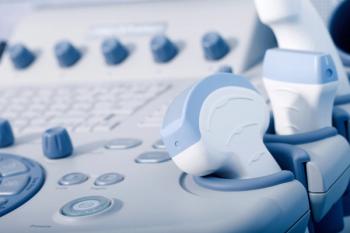
Emerging multiplex UTI testing drives Medicare costs amid increased utilization
A recent study found a sharp rise in Medicare claims for multiplex urinary tract infection testing from 2016 to 2023, underscoring a significant financial impact and the need for further research into its clinical benefits.
Emerging multiplex urinary tract infection (UTI) testing has seen significant increases in use between 2016 and 2023, leading to high costs for the Medicare program, according to a recent study published in JAMA Network Open.1
Many new technologies have emerged in recent decades for the diagnosis of infectious diseases, including multiplex molecular syndromic panels designed for rapid diagnosis through the detection of multiple pathogens and some antimicrobial resistance genes. These tests improve sensitivity, workflow, and the time to results.
Currently, there are no multiplex molecular syndromic panels approved for the diagnosis of UTI in the United States.2 However, these panels are available as laboratory-developed tests (LDTs), allowing for use in a laboratory certified under the Clinical Laboratory Improvement Amendments of 1988.1
Investigators conducted a cohort study to assess the frequency of multiplex UTI testing use in Medicare patients over time. Centers for Medicare & Medicaid Services (CMS) data was evaluated for the number and rate of paid claims for multiplex UTI tests from January 1, 2016, to December 31, 2023.
Annual denominators were determined for the number of eligible fee-for-service beneficiaries and the number of unique fee-for-service beneficiaries with residence in a nursing home for at least 1 day in a given year. Minimum Dataset 3.0 (MDS) assessments were required for patients with residence in a nursing home.
Medicare Part B claims were reported as the primary outcome, identified using an algorithm. Relevant information included beneficiary information, service dates, claim types, diagnosis codes, and overall payment amounts. The presence of at least 3 codes of interest was necessary for a claim to be identified by the algorithm.
Any line items with a Current Procedural Terminology, Fourth Edition code specific to another infection type were excluded from the analysis. Eligible claims were categorized using International Classification of Diseases, Tenth Revision, Clinical Modification diagnosis codes.
Investigators identified between 31,110,656 and 36,175,559 beneficiaries from 2016 to 2023, with 4% to 7% identified by an MDS assessment for residence in a nursing home. There were 934,748 Part B Medicare claims for unspecified multiplex testing, 57% of which had a primary UTI diagnosis.
Participants with UTI claims were aged a median 77 years and 66% were women. An increase in the number of unspecified multiplex molecular test claims per year was reported, from 98,817 in 2016 to 710,378 in 2023.
Overall, the rate of UTI multiplex testing significantly increased between 2016 and 2023, at 2.4 and 148.1 claims per 10,000 fee-for-service beneficiaries, respectively. While this rate was significantly lower than the rate for urine cultures with a primary diagnosis of UTI in 2023 of 1116.2 per 10,000, the rate for urine culture did not increase during this time.
For beneficiaries residing in a nursing home, the UTI multiplex testing rate rose from 0.24 per 10,000 fee-for-service beneficiaries in 2016 to 247.9 per 10,000 in 2023. From 2020 onward, this increase in prevalence was more significant than the increasing rate among community-dwelling Medicare beneficiaries.
There were 460,706 UTI multiplex test claims in 2023, 67% of which were from female beneficiaries. Line items of interest on UTI multiplex claims had a median cost of $585 per claim in 2023 vs $8 per claim for corresponding line items on UTI urine culture claims.
These results indicated increasing rates of multiplex UTI testing use, leading to higher costs to CMS. Investigators recommended additional monitoring and research to determine how multiplex UTI testing impacts antimicrobial use.
References
- Hatfield KM, Kabbani S, See I, et al. Use of multiplex molecular panels to diagnose urinary tract infection in older adults. JAMA Netw Open. 2024;7(11):e2446842. doi:10.1001/jamanetworkopen.2024.46842
- List of microbial tests. US Food and Drug Administration. Accessed November 27, 2024.
https://www.fda.gov/medical-devices/in-vitro-diagnostics/nucleic-acid-based-tests#microbial
Newsletter
Get the latest clinical updates, case studies, and expert commentary in obstetric and gynecologic care. Sign up now to stay informed.










